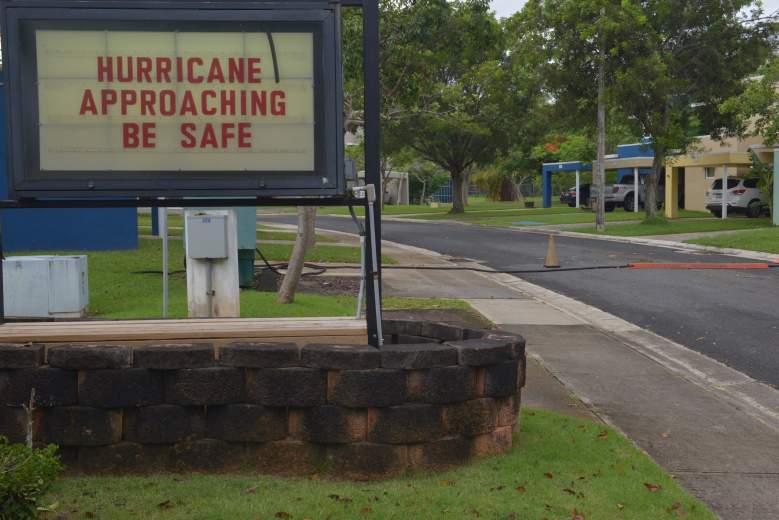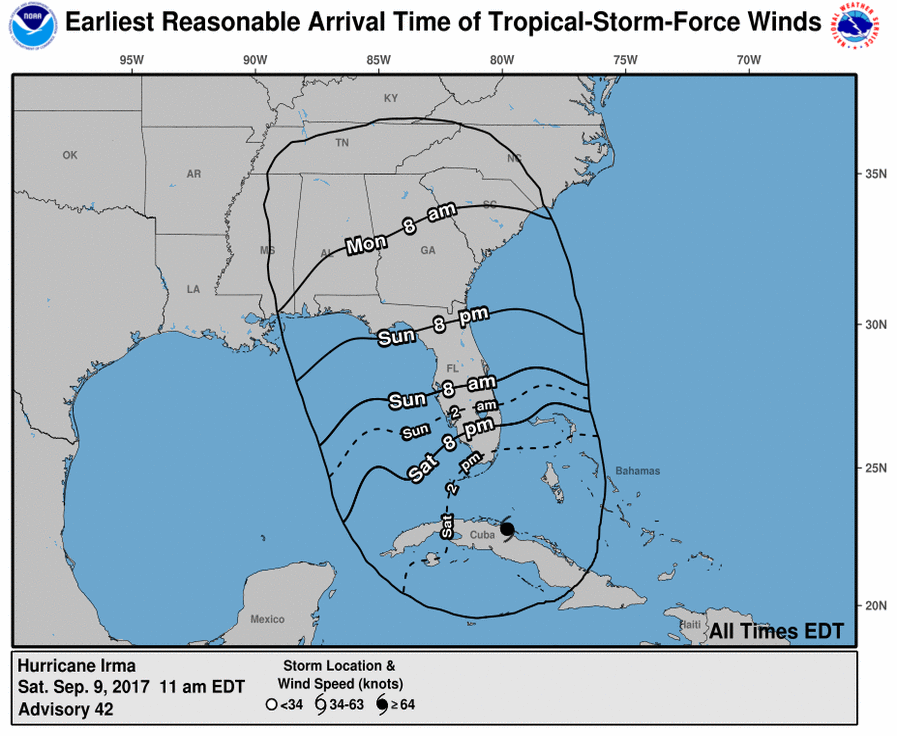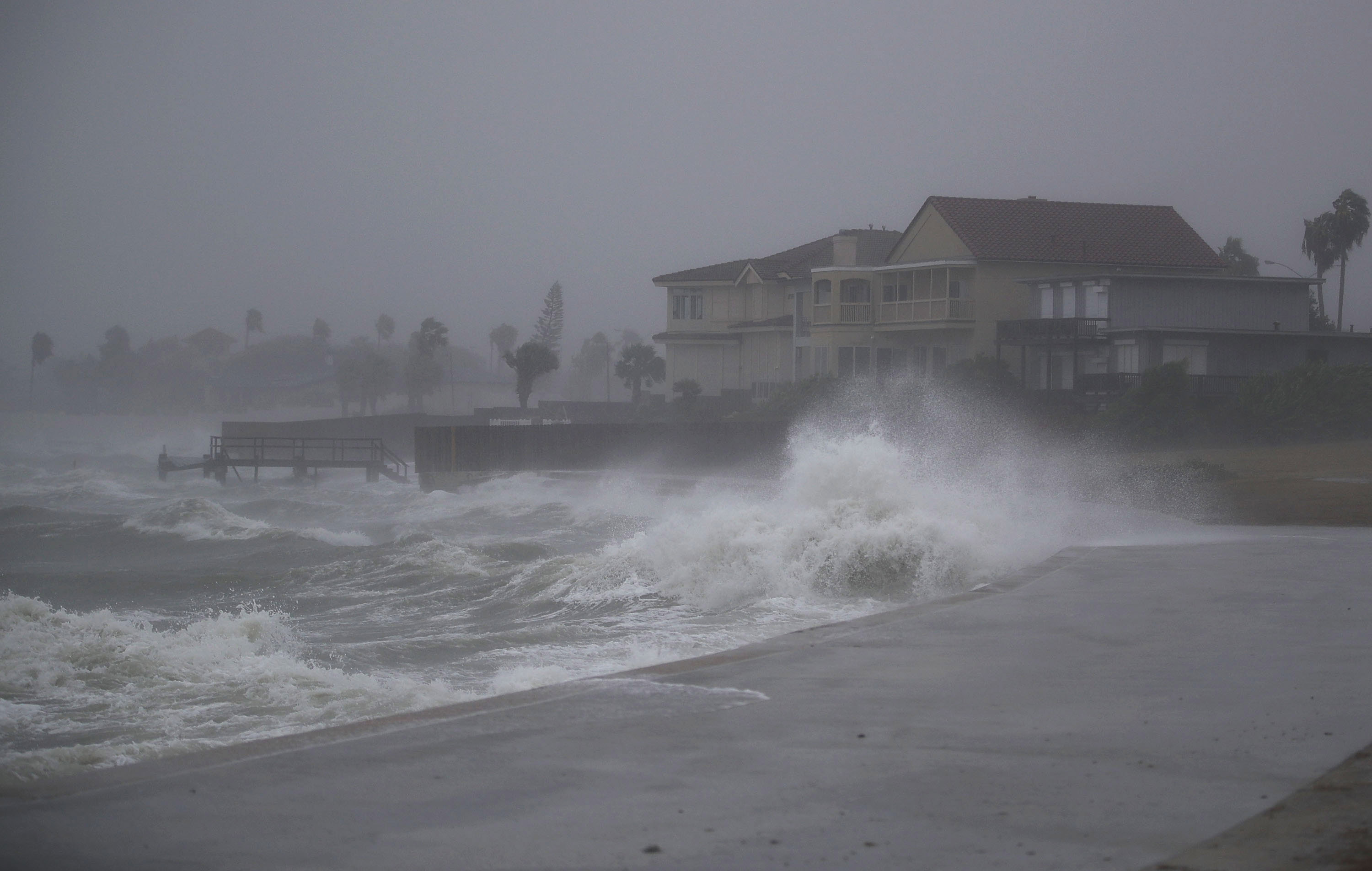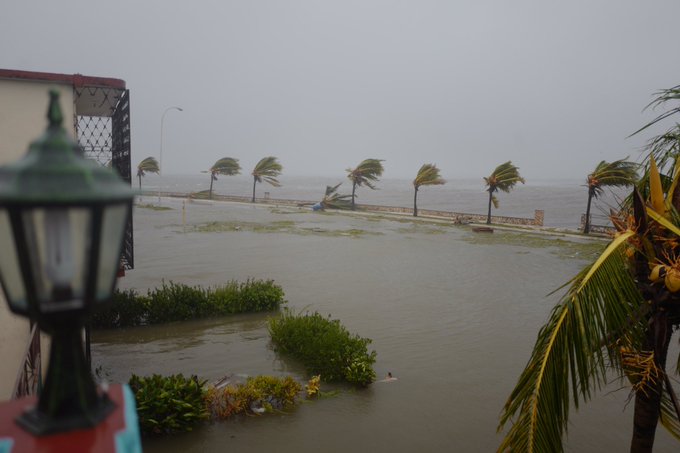
U.S. Coast Guard photo by Petty Officer 2nd Class Jonathan Lally Coast Guard Sector San Juan personnel put up a safety message on the base housing marquee sign to remind the Coast Guard residence of the coming Hurricane Irma.
Hurricane Irma is currently pounding the north coast of Cuba and is expected to strengthen as it heads towards Florida.
The hurricane has been downgraded to a Category 3 storm, according to the National Hurricane Center. It has maximum sustained winds of 125 miles an hour.
The core of Irma will continue to move near or over the north coast of Cuba later today, and will reach the Florida Keys Sunday morning. The hurricane is expected to move along or near the southwest coast of Florida Sunday afternoon.
Millions of people in Florida have begun evacuating. Florida Governor Rick Scott is urging anyone who hasn’t left to do so now.
Power outages have already been reported in Florida.
And the National Weather Service is warning of “catastrophic” storm surges, up to 15 feet in some areas.
President Donald Trump said he’s continuing to monitor the storm and tweeted out a list of resources on Saturday morning:
Here’s what you need to know:
1. The Eye of Hurricane Irma Is Passing Along the Northern Coast of Cuba
The National Hurricane Center said hurricane-force winds will extend outward up to 70 miles from the eye of the storm.
Hurricane Irma officially made landfall on Wednesday as it hit the island of Barbuda in the Leeward Islands. The Category 5 storm plowed through the Leeward Islands, the Caribbean and moved along the northern parts of Puerto Rico, causing dozens of deaths and billions of dollars in damage.
2. It’s one of the strongest storms ever recorded in the Atlantic Ocean.
Hurricane Irma packed maximum winds of 185 miles per hour making it one of the strongest storms ever recorded in the Atlantic Ocean. Several storms have hit 185-mph winds, including Hurricane Gilbert in 1988 and Hurricane Wilma in 2005.
In 1980, Hurricane Allen reached winds of 190 miles per hour. That storm hit the Caribbean, parts of Mexico and Texas. It caused $1.24 billion in damages and killed 269 people.
3. Hurricane Irma Is Expected To Hit Florida on Sunday

National Hurricane Center
Florida, Georgia, South Carolina and North Carolina have all declared a state of emergency ahead of the storm.
In Florida, 6.3 million people have been told to leave, according to the Miami Herald. Miami is expected to put a curfew in place beginning at 7 p.m. Eastern time.
More than 300 healthcare facilities across the state have been evacuating, the Miami Herald reported, including 24 hospitals, 51 nursing homes and 213 assisted living facilities.
4.The massive storm comes on the heels of Hurricane Harvey

Waves pound the shore from approaching Hurricane Harvey on August 25, 2017 in Corpus Christi, Texas. (Photo by Joe Raedle/Getty Images)
Hurricane season runs from June 1 to Nov. 30 but peaks during late August and September. Hurricane Harvey, a Category 4 storm, made landfall on Friday, Aug. 25 in Texas. That storm killed at least 60 people and is expected to costs upwards of $180 billion in damage, according to Fortune.
And Hurricane Joe is now churning in the Atlantic, threatening islands already devastated by Hurricane Irma.
5. Hurricanes Are Named So They’re Easier to Remember.

GettyAn evacuation route sign in Fort Lauderdale.
Hurricanes used to be named for their locations, which made them much more difficult for the general public to keep track of. The National Hurricane Center explains:
Experience shows that the use of short, distinctive names in written as well as spoken communications is quicker and less subject to error than the older, more cumbersome latitude-longitude identification methods. These advantages are especially important in exchanging detailed storm information between hundreds of widely scattered stations, coastal bases, and ships at sea.
The use of easily remembered names greatly reduces confusion when two or more tropical storms occur at the same time. For example, one hurricane can be moving slowly westward in the Gulf of Mexico, while at exactly the same time another hurricane can be moving rapidly northward along the Atlantic coast. In the past, confusion and false rumors have arisen when storm advisories broadcast from radio stations were mistaken for warnings concerning an entirely different storm located hundreds of miles away.
In 1953, the United States started using female names for storms, but that ended in 1978. Now men’s and women’s names are alternated each year.
Names are chosen by an international committee of the World Meteorological Organization. They come up with a list of names for six years and then repeat the list every seventh year.
Storms that cause massive damage and death are retired out of sensitivity.



